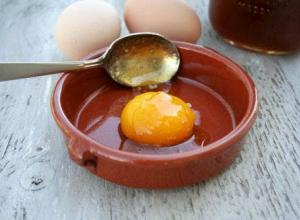Dior who is the designer. Christian Dior
Every time we pronounce the name Christian Dior, we mean style, sophistication and luxury of everything that this legendary brand with more than half a century of history produces - clothes, perfumes, cosmetics.
Even as a child, a gypsy woman predicted the fate of the future great couturier. She said that in the future he would be left without a livelihood, but women would bring him luck, and it was thanks to them that he would achieve success and become a wealthy man. Then 14-year-old Christian simply laughed in response to these words.
The skeptical teenager did not particularly believe in predictions, besides, his father was a wealthy entrepreneur, and Christian could not imagine what it would be like to be left completely without money. The boy's parents hoped that he would pursue a diplomatic career, ignoring his desire to become an artist. Christian had to go to the Paris School of Political Science.
But political science failed to discourage him from pursuing art. Dior and a friend open an art gallery and sell antiques. Christian moved in Parisian bohemia, and it seemed that there would be no end to his carefree existence. But everything changed overnight. In 1931, Christian lost his mother. The father was deceived by his partner and went bankrupt as a result. The art gallery also closed, Christian survived only with the help of his true friends.
Lack of money forced Christian Dior to return to his childhood hobby - drawing. He sketched several sketches of dresses and hats, which were bought by the Le Figaro newspaper. After receiving his first fee, it occurred to Dior that his childhood hobby could actually bring in money. He begins to collaborate with various magazines, creating clothing models for famous couturiers.
But true success awaited him after the end of the war. The textile magnate invited Dior to take over as artistic director of his fashion house to lift it out of the ruins it had fallen into during World War II. Christian agreed, but set a bold condition, which, however, was accepted - the fashion house received the name “House of Christian Dior”. From the very beginning, Dior knew the value of himself and his talent.
In the cold post-war winter of 1947, in Paris, where there was a shortage of basic coal and gasoline, and there were constant problems with clean water and electricity, the premiere show of Christian Dior’s collection called “New Look” took place. Wonderful exotic flowers bloomed on the catwalk, one after another fashion models in chic dresses came out. The spectators sat motionless, delighted with this celebration of life in post-war gray Paris. Christian Dior again reminded them that they are beautiful, gentle, and feminine.
The success of the show was incredible. Dior said that he painted women who looked like flowers. This was exactly what the fair half of humanity lacked at that time. Dior became an idol who brought back beauty and femininity. Thus the gypsy’s prophecy came true - women contributed to the success of Christian Dior. The fashion designer remembered her words and became very superstitious, realizing that the prophecies were coming true. Now he did not take a single step without the advice of his personal fortuneteller, Madame Delahaye.
A few years later, Christian Dior's fashion house grew into a whole network of enterprises that employed more than 2,000 people. Dior recognized only handmade work, so in his workshops each item of clothing was created by the careful labor of the Fashion House workers. Dior did not want to make his enterprise just another production, churning out works of art in mass quantities, because such an approach deprived the latter of the actual opportunity to be called works of art. The great couturier treated dresses as living beings.
Having earned fame as an extravagant couturier, Christian Dior opens a perfume manufacturing company. He was firmly convinced that perfume is a continuation of the dress, an indispensable attribute of the finished toilet. The very first perfumes from Dior - Miss Dior, Diorama, Diorissimo, J"adore - became timeless classics and are still popular today.
In the perfume composition of Diorissimo perfume, released in 1956, the main note belongs to the lily of the valley, the mascot of the House of Dior. These perfumes were the first to contain notes of this flower.
The next step was the opening of a branch of the House of Dior, producing cosmetics, which were also intended to become part of the complete image of a stylish woman.
Since 1955, Dior began producing lipstick, since 1961 it began producing nail polish, and since 1969 Christian Dior has been producing cosmetics in series. The Dior brand has always set itself the goal of finding a harmonious combination of colors for all products included in one series. And here Dior could not deviate from its artistic taste. By creating new colors, Dior never repeats itself. Each time a new color scheme is chosen, but within its limits all colors combine perfectly and support each other.
The couturier worked tirelessly, and this affected his health. When he was about to undergo a course of treatment in Italy, he consulted with a personal fortuneteller, but even after receiving a warning, for the first time he did not listen to her advice. On October 24, 1957, Christian Dior died of a heart attack while in Italy.
After Dior's death, Yves Saint Laurent, a young designer who had joined the firm four years earlier, became the leading designer of the House. In 1960, Yves Saint Laurent was called up for military service, which forced him to leave his post. He was replaced by Mark Boan, followed by Gianfranco Ferré in 1989. In October 1996, John Galliano took over as chief designer of the House of Christian Dior.
To date, Dior brand stores can be found in 43 countries, including Japan, China, Australia, Brazil and other countries.
“Christian Dior is an incredible company, and it’s been a huge privilege for me to have the opportunity to write a few pages of my own in its history book,” said Raf Simons, announcing his resignation as creative director of Christian Dior women’s direction. “I would like to thank Mr. Bernard Arnault for the trust he has placed in me by giving me the incredible chance to work in such a beautiful house with a team that one can only dream of.”
The statement, issued yesterday after the close of trading on the Paris stock exchange, had the effect of a bomb exploding. Now that it is possible to compare some facts, the possible reasons for this unexpected departure are becoming more obvious. As it turned out, Simons informed Bernard Arnault, the CEO of LVMH, and Sidney Toledano, who has been at the helm of Dior for more than 20 years, of his intention not to renew his contract in the summer.
|
Spring 2016 |
Autumn 2015 |
Spring 2015 |
Despite the compliments and congratulations that Arnault said to Simons backstage at the 2016 spring-summer collection, his departure was already a foregone conclusion, although management more hoped to persuade him, and therefore was in no hurry to make an official statement.
Before what turned out to be his last show on October 2, Raf was somewhat confused: “I keep asking myself, and I feel like others too. We all talk a lot about where is this all going? After all, what’s happening with fashion now is far from just clothes.”
Raf Simons initially worked exclusively on men's clothing and began making women's clothing only in 2005 at Jil Sander. He is credited with the introduction of more modern linear silhouettes at Dior, a graphic vision in both styles and prints, sometimes futuristic details, but overall the creation of clothes that became not part of a costume drama, but a real “street”.
|
Spring 2015 |
Spring 2015 |
Autumn 2014 |
The results of the latest financial year show that sales of the Parisian house increased by 18%, reaching $1.94 billion (an increase of 60% in three and a half years).
But, apparently, Simons simply could not stand the rhythm of work at Dior. The post of creative director at Dior seems like a dream job for many, but occupying it requires sacrificing personal space and time. Raf comes from the tiny Belgian town of Neerpelt, lived in Antwerp for a long time and is accustomed to a slow life. Already working for Jil Sander, he was unable to fit into the working rhythm of the company with its main office in Milan, despite the fact that the scale of this brand is incomparable with Dior. In the too formal environment of the Parisian house, he clearly felt uncomfortable, which is very clearly visible in the documentary “Dior and I”, when the creative director was suddenly relegated to the background.
He said in an interview that with six collections a year he is sorely short of time: “When you work on so many shows a year, it turns out that there is not enough time for everything. Technically, there are people who sew samples and manage to do it. But ideas lack an incubation period, and it is very important. When you're trying to implement an idea, you often look at it and think, “Let's put it aside for a week and then we'll come back to it.” But this is impossible when you only have one team that works on all the collections.”
|
Autumn 2014 |
Autumn 2014 |
Spring 2014 |
In addition, Simons could not influence the advertising of perfumes and cosmetics, including with the participation of stars, and the design of boutiques: for such giants as Dior, it turns out to be difficult to bring everything to the common denominator of the creative director’s vision, which is why the house ended up with would be several unrelated images.
The most obvious explanation for the reluctance to renew the contract with Dior is the designer’s improved personal life and the fairly good business of his own brand. Contrary to the “arms race” common in the fashion industry, when everyone strives to occupy a more important position and attract maximum attention, Simons chose his own path - a completely comfortable, but calm life with his loved one, far from the vicissitudes of the fashion world.
Simons' next move is still shrouded in mystery. And although there are rumors in the industry that Calvin Klein is interested in him, for at least a year he is unlikely to be able to work for any other brand, according to the contract.
Noting the extremely friendly atmosphere that accompanied Simons’ decision, one cannot help but recall the designer’s previous high-profile departure from an equally famous Parisian house. In the summer, Alexander Wang, who joined Balenciaga only at the beginning of 2013, announced that he did not intend to renew his contract. At the same time, everything pointed to the continued cordial relationship between the designer and the CEO of Kering, which owns Balenciaga, Francois-Henri Pinault. For both, next summer's collections were the last under the contract.
|
Autumn 2013 |
Spring 2013 |
Spring 2013 |
Whatever the real reasons for these breakups, the positive note has become something of a welcome trend. Suffice it to recall several examples when designers invited to big houses were treated at least mercilessly: Christophe Decarnin, right before the Balmain show, found himself in a hospital bed with a nervous breakdown; The 15-year collaboration between Kering and Nicolas Ghesquière ended in a lengthy legal battle; Galliano's disgraceful dismissal for anti-Semitic remarks from Dior; the unattractive treatment of designer Alessandra Fachinetti for the reputable house Valentino, who learned only from the press that her contract had been terminated; in fact, in 2012, Jil Sander treated Simons himself unceremoniously, suspending his contract ahead of time.
Chloe This Parisian brand, after the departure of designer Phoebe Philo, also changed several designers, although at a more gentle pace: |
On December 16, 1946, a new fashion house opened in a mansion on Avenue Montaigne. With a team of 83 employees and a starting capital of 6 million francs, the legendary Christian Dior began building his own fashion empire. Today Dior is synonymous with feminine luxury, one of the undisputed leaders in the fashion and beauty industries.
Since its opening, the Parisian House has experienced ups and downs - there are many memorable dates in its history, which, perhaps, should be known not only to fashion experts.
1946 - The beginning of the journey
After the end of World War II, textile magnate and one of the richest entrepreneurs in France, Marcel Boussac, approached Christian Dior with an offer to head the fashion brand Philippe et Gaston. Dior refused - he wanted to start a new stage in his creative journey and dreamed of his own enterprise. With the financial help of Boussac, his wish came true: on December 16, 1946, in the mansion at 30 Avenue Montaigne, the new Parisian fashion house Christian Dior opened its doors.
1947 - New Look
On February 12, 1947, the couturier presented his first creations to the press. The Corolle collection, which we recognize today under a different name, gave impetus to the emergence of the style of the same name. The New Look, as Harper's Bazaar editor Carmel Snow dubbed the collection, acted as a counterbalance to the rough clothes of the post-war era. Dior sought to emphasize fragile and graceful features, his style glorified elegant, feminine images. Today, when we talk about New Look, we are talking about an entire era in history, without which it would be impossible to imagine modern fashion.

1949 - First license
In 1949, Christian Dior first introduced the concept of a licensing agreement in the fashion industry. Together with his partner Jacques Rouet, he organized the licensed production of luxury accessories. Subsequently, this progressive business strategy was adopted by other fashion houses.
1953 - Rouge Dior
1953 gave the world the iconic Rouge Dior lipstick. Christian Dior understood perfectly how important accents are in creating a holistic image. The famous quote “a light touch of color is enough to completely change your appearance” belongs to the legendary designer. The red lipstick he created became a symbol of freedom from the conventions imposed on women by a conservative society. The first Rouge Dior series consisted of only 8 shades, each of which was combined with fabrics from the Christian Dior collections. This fall, the line was supplemented with 37 new shades—actress Natalie Portman once again became the face of the advertising campaign for the updated Rouge Dior.

1954 - Blenheim Palace
In 1954, Christian Dior and the Duchess of Marlborough held a charity show at Blenheim Palace. All funds raised during the show went to the British Red Cross. Subsequently, Dior returned here twice: in 1958 and 2016. Guests gathered to see the Dior Cruise 2017 collection were transported to the famous palace by three hundred cars, several helicopters and two private Dior Express trains.


1957 — Young Saint Laurent
Up-and-coming designer Yves Saint Laurent joined the fashion house's team in 1955, at the age of 19. Christian Dior personally chose his candidacy: Saint Laurent had enough talent and charm to become the couturier’s main assistant. After Dior's death in 1957, the young creator took on the role of artistic director - at that time he was only 21 years old. And although today his name is inextricably linked with the history of the House, he did not occupy a leadership position for long: already in 1960, Saint Laurent was called up to serve, and Mark Bohan was appointed creative director in his place. At the beginning of his career, Saint Laurent managed to create very successful collections in commercial terms, but then his designs acquired a more experimental character - and his unexpected farewell was not a tragedy for the House.


1959 — Dior in Moscow
On June 10, 1959, the Parisian fashion house came to Moscow with a show, and soon held an official reception and fashion show in the Trud hall of the Krylia Sovetov cultural center. This historical event attracted enormous public attention - the Dior summer collection became the first “capitalist” fashion show in the USSR. Few gained access to it - only 12 thousand people were able to enjoy French aesthetics.
1961 - Slim Look
In 1961, Mark Bohan presented a spring collection called Slim Look. The designer updated the iconic Dior silhouette, making it more modern. The line was a great success: among its fans is Hollywood diva Elizabeth Taylor, who purchased 12 different dresses for personal use.

1967 - Miss Dior
1967 marked another important milestone in the history of Dior: it was then that Bohan’s assistant Philippe Guibourg first created a Prêt-à-Porter collection for the Parisian house, called Miss Dior. At the same time, the Baby Dior boutique opened its doors - the first store of the Dior children's line was located at 28 Avenue Montaigne.

1985 - Poison and Arno
Dior Poison was first introduced in 1985. Created by the talented perfumer Edouard Flechier, this passionate fragrance has become one of the most successful in the history of modern perfumery. There is a legend that at one time Dior Poison became so popular that American bars even began to hang signs that said: “No cigars, No Poison.” However, it was not only the release of Dior Poison that made this year special. In 1985, a new era began for the House: Bernard Arnault, the future president of LVMH, became chief executive officer of Dior.
1989 — “Golden Thimble”
In 1989, Marc Bohan's career at Dior came to an end: he was replaced by Gianfranco Ferré. The Italian’s first collection for the House created a real sensation - his stunning success was awarded the prestigious Dé d’Or, “Golden Thimble” award. Ferré's time at Dior was marked by his desire to revive the traditional images of Christian Dior: the designer carefully studied the archives of the house and created collections based on the vision of the legendary couturier.
1994 - Lady Dior
Princess Diana's favorite accessory, the Lady Dior bag was born in 1994. Its creation was inspired by Dior's Haute Couture collections. The commercial success of the new model was incredible - very soon the bag became a real hit. Today, this elegant and understated design is familiar to fashionistas around the world. Since 2008, French actress Marion Cotillard has been the face of Lady Dior.

Princess Diana. Monica Bellucci

Marion Cotillard
1996 - The Galliano era
In October 1996, the House of Dior welcomed a new era - the era of the master of shocking John Galliano began. A favorite of Anna Wintour and a recognized virtuoso of design, Galliano turned the catwalk into a theater: no modern fashion show can compare in brightness with the shows of the collections he created for the House of Dior. The incredible combination of feminine style and modern approach to creating clothes that he praised still inspires designers today.

2011 — “Dior and I”
In 2011, the Parisian House was rocked by a scandal: creative director John Galliano allowed himself to make clearly anti-Semitic statements. The decision to fire Galliano was made with lightning speed, and on March 1, 2011, the English rebel left his position. After some time, Raf Simons signed a contract with Dior. Simons created his first couture collection in eight weeks (as opposed to the usual six months) - it was this brilliant debut that formed the basis of the documentary film “Dior and I”. The “Simons era” became fruitful for the House: thanks to him, Dior began to work closely with the art world and for the first time in its history made a black woman its ambassador - the singer Rihanna became the face of the House.

Christian Dior Haute Couture fall-winter 2012 (photo by Patrick Demarchelier)

Still from the film “Dior and I”
2016 - Chiuri's brilliant debut
In October 2015, Simons left his position, and this summer we finally learned who had the honor of replacing him as creative director: Maria Grazia Chiuri became the artistic leader of the Parisian house. For the first time, the Dior team was led by a woman: Chiuri left Valentino after 17 years in order to give Dior a new direction. In the year of her 70th anniversary, she presented her debut collection for Dior, summing up the temporary result and opening a new page in the history of the House.

« It's always worth highlighting your best features. As a matter of fact, this is what fashion does - enhances and emphasizes female beauty" - Christian Dior.
These words, spoken by the founder of one of the largest fashion houses in France, have always been decisive in the work of the great couturier, and all of Dior’s followers, who replaced him as director of the house, adhered to the same line whenever possible. Therefore, the Dior brand today and always is, first of all, maddening, sensual and mysterious femininity.
The founder of the fashion house is Christian Dior.
Christian Dior was born in 1905 in the small town of Granville in France, and in 1911 the family moved to France. Christian has been interested in drawing and creating clothes since childhood. His parents wanted Christian to become a diplomat, however, Christian very quickly abandoned his studies in political science and, together with his friend, opened an art gallery where Matisse, Picasso and many other artists exhibited. However, in 1931, after the bankruptcy of Christian's father, the gallery had to be closed, and Christian himself made money by selling his sketches of clothes and hats to various fashion magazines. The development of Dior's career was hindered by the war; he served in the army, and only in 1946 was he able to open his own fashion house thanks to his acquaintance with Marcel Boussac, who agreed to invest money in Dior's enterprise.
In 1947, Christian Dior released his first collection, which made all fashionistas in Paris talk about the talented couturier. Harper's Bazaar fashion editor Carmel Snow gushed about the collection: "It's a completely new look!" Thus, the silhouette of the dresses demonstrated by Dior on the catwalk forever secured the name New Look.

Dior invited women to become gorgeous and feminine again: models walked along the catwalk in dresses with full skirts and crinolines, narrow bodices emphasizing a wasp waist, wearing long gloves, and their faces mysteriously hidden behind veils.




After this, Dior's celebrity only grew. He managed to release his own line of shoes and perfumes, and streamlined the production of fashion house clothing in various regions of France through a licensing agreement.
The master's favorite colors were gray and pink. He believed that gray was suitable for any fabric and any dress, while he considered pink the color of joy, femininity and highlighted the many shades of pink that were present in his collections. Of the details, Christian really loved bows. They decorated dresses, often being an element of cut. Christian Dior created beautiful evening dresses. “I believe that a ballgown is as essential an element of a woman’s wardrobe as a suit. It lifts your spirits..."
Dress from the 1955-56 collection


Coat from the 1948-49 collection

This was the master's style. Unfortunately, the great couturier passed away very early at the age of 52.
His place in 1957 as director of the house of Dior was taken by Yves Saint Laurent. And this marked a completely new period in the fashion house. Yves Saint Laurent created dresses with an a-line silhouette, long above the knee with narrow shoulders.

This was a completely different look. Laurent managed to create six collections for the house. After which he left his post because he was called up for military service.
He was replaced by Mark Boan. The clothes she created were in keeping with the spirit of the house of Dior, however, they were simpler and more wearable. Dresses, while maintaining a feminine silhouette, became lighter; preference was given to soft fabrics and designs. At this time, among the fans of the house there were many famous women, such as Marlene Dietrich, Grace Kelly and others.

In 1989, Mark Bohan resigns and is replaced by Gianfranco Ferre. He returned to the New Look silhouette and created beautiful collections with chic finishes and magnificent decor. At this time, the fashion house acquired new clients and again entered an era of prosperity.
Gianfranco Ferré for Dior, haute couture collection 1989-1990


In 1997, John Galliano took over as creative director.
Galliano has taken a new huge step in the development of the fashion house. He created a new image of the Dior woman: romantic, mysterious, sensual and incredibly feminine - this is exactly the kind of woman that appears in every Galliano collection. Under John Galliano, the number of evening dresses in the collections significantly increased, and the shows themselves became more outrageous and theatrical; he raised the level of fashion shows to an enchanting performance. Large jewelry, flower dresses, bright colors, magnificent trim, embroidery, abundance of decor - all this is Galliano's style, he brought all this with him to the Dior fashion house.
Collection autumn-winter 2004-2005





Collection autumn-winter 2010-2011




In April 2012, Raf Simons, who had previously worked for the Jill Sander brand, was officially appointed to the post of art director. He will be in charge of haute couture collections, ready-to-wear and an accessories line. For now, fashionistas can only guess what course the new director of the house will choose and whether the house’s clothes will remain the way Dior himself saw them and the way we love them: feminine, bewitching, beautiful.
Today, the Dior fashion house produces ready-to-wear clothing lines for women, men and children, haute couture, a line of accessories and perfumes. The fashion house is represented in almost all countries of the world, and ranks 4th in the world in terms of perfume sales.



And finally, I want to give one more quote from Christian Dior, the secret of elegance from the great couturier: “Elegance is a symbiosis of individuality, naturalness, attentiveness to yourself and your clothes and simplicity.”

The show of the first clothing lines of the Christian Dior fashion house - Corolla and Figure 8 (in the American style of New Look) took place on February 12, 1947. The release of the new Miss Dior perfume was timed to coincide with this event. They were supposed to personify the young fashion designer’s fresh look at the women of post-war France. After all, Dior considered smell an integral part of the image, just like a hairstyle, a bag or shoes. He wanted the woman to be dressed in Dior from head to toe.
The master’s romantic and elegant outfits have conquered the world. Fashion magazines called Christian "the Caesar of fashion." Thanks to Dior's entrepreneurial spirit, Miss Dior perfume also became a symbol of the new time. It's time for women to change, to become charming and stylish again. Christian created his fragrances not only for the elite. He dreamed of making every woman beautiful and happy.
History of the house of Christian Dior
 The creator of the house, Christian Dior, was born in 1905 in the Norman town of Granville on the English Channel coast. His parents predicted a career as a diplomat for him, but the boy dreamed of art. He studied architecture, drew sketches of dresses and hats, and even published in Figaro.
The creator of the house, Christian Dior, was born in 1905 in the Norman town of Granville on the English Channel coast. His parents predicted a career as a diplomat for him, but the boy dreamed of art. He studied architecture, drew sketches of dresses and hats, and even published in Figaro.
Returning from the front in 1941, C. Dior first worked at the famous fashion house “Lucien Lelong”, and a year later he created his own perfume workshop. But attempts to conquer the world of fragrances have not yet led to success.
 During this period, he placed his main focus on the production of clothing and in 1946 opened the Christian Dior fashion house with financial support from the manufacturer M. Boussac. For the release of a new clothing collection, it is necessary to come up with a scent that would personify love itself.
During this period, he placed his main focus on the production of clothing and in 1946 opened the Christian Dior fashion house with financial support from the manufacturer M. Boussac. For the release of a new clothing collection, it is necessary to come up with a scent that would personify love itself.
His childhood friend, perfumer Serge Heftler Luiche, creates Miss Dior Original perfume for Christian. The general public did not appreciate the unusual chypre-floral scent, but after some time the perfume grew in popularity and began to be actively sold all over the world.
1947 is the year the perfume house was founded as a separate line of activity. Christian Dior himself never created fragrances, but this type of creativity fascinated him a lot. Therefore, he invited the best perfumers in France to work on the perfumes of his brand.
 In the 40-70s of the last century, the Dior perfume house created luxurious and noble scents that emphasized the general orientation of the fashion house. They are modern classics. But the fashion trends of the 80s greatly influenced Dior; it became too simple and ordinary. Fewer and fewer fragrances were produced. Of the masterpieces of those years, I can only remember.
In the 40-70s of the last century, the Dior perfume house created luxurious and noble scents that emphasized the general orientation of the fashion house. They are modern classics. But the fashion trends of the 80s greatly influenced Dior; it became too simple and ordinary. Fewer and fewer fragrances were produced. Of the masterpieces of those years, I can only remember.
With the arrival of the leadership of Jean Franco Ferret in 1989, the brand's style changed dramatically: a craving for luxury and elegance appeared, as it was under Christian Dior himself. In the 90s, the perfume house released two women's fragrances that conquered the world: Dolche Vita and Dune. They seem to be imbued with love and thirst for life.
A new surge in the popularity of perfumes began in 1999 with the perfumery, and later with Miss Dior. They became the starting point for the commercialization of the brand. Numerous flankers of old and new fragrances appear on the catwalk and disappear without a trace to this day.
Perfumers who worked for the Dior brand
 Over the years, the following have collaborated with the perfume house:
Over the years, the following have collaborated with the perfume house:
- – He created only six compositions, but each is a masterpiece: Diorama (1948), Diorissimo (1956), Eau Fraiche (1955), Eau Sauvage (1966), Diorella (1972), Dior-Dior (1976). Some fragrances have become legendary.
- – Dior created only one fragrance for the perfume house, but what a fragrance it was (1999).
- – He has been creating for the brand since 2007 and has also added several luxurious formats to his collection: , continuation of the J’adore collection, Dior Passage, .
- – Collaborates for more than 30 years. Created the legendary and flanker collections.
Fragrances were also created by: Beatrice Piqué, Guy Robert, Paul Vacher, Pierre Bourdon, Maurice Roger, Olivier Polge, Terry Wasser, Jean Martel, Jean Louis Suzac, Christine Nagel, Jaco Cavlier, Edouard Fletcher and many others.
Brand philosophy
Among perfume houses, Dior has a special, refined taste. After all, these fragrances were intended only to highlight female beauty. The first perfume has already become a classic. But even those created in recent years do not run counter to the Dior concept.

You will not find harsh vulgarity even in those Dior fragrances that are designed to seduce. Femininity, tenderness, joy and spiritual strength – this is the essence of most of the brand’s perfumes. Monsieur Dior dreamed of making women not only beautiful, but also happy. The modern Cristian Dior brand is aimed at commercial success. But, nevertheless, the scents are still beautiful and also inspire us.
Perfume stores offer dozens of bottles with the coveted abbreviation CD. The price is impressive, but we know it's worth it! Over the 70 years of its existence, the brand has become a measure of quality, style and elegance. Is this what Monsieur Dior dreamed of?
Latest site materials
Experience

Hangnails on fingers, causes, removal, treatment, prevention What do hangnails on fingers mean?
A hangnail is a tear in the skin of the nail fold. In most cases, they occur on the lateral roll of the finger, on the side of the nail, since this area is most susceptible to mechanical stress. Also a few burrs, but much less frequently, about
Cooking
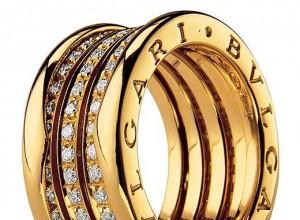
The best jewelry factories in Russia Spanish jewelry brands
Fashion trends in jewelry have always interested women of any age. Everyone wants to have unique jewelry from famous jewelry brands in their arsenal. Of course, for this it is necessary, at a minimum, to know which jewelry brands they choose
Experience
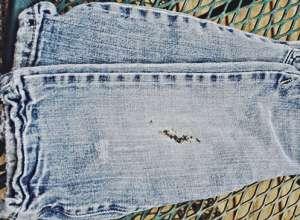
Luxurious long hair is every girl's dream. But to achieve it, you need to actively care for your hair, using masks, balms and special shampoos. As a rule, girls carry out all therapeutic activities during the day, not
How and with what to wash and remove stains from tar and bitumen from clothes and linen
Health
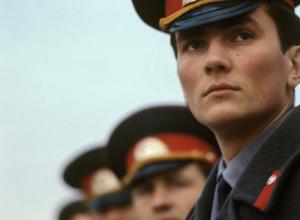
The need to know how and with what to dissolve bitumen arises not only among workers in the housing and communal services sector and employees of vulcanization workshops. Bitumen compounds and other resins accompany our movement in urban environments, leaving a noticeable mark
Police Day Cool congratulations on Police Day
Horoscope
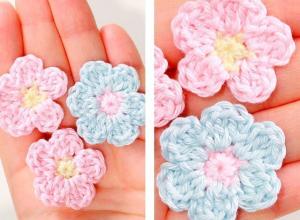
Day of the Internal Affairs Officer of the Russian Federation Historical background The Day of the Ministry of Internal Affairs of Russia is celebrated annually on November 10th. This is the number chosen to honor the profession that guards public order. Thanks to the road patrol
Crochet flowers for beginners



